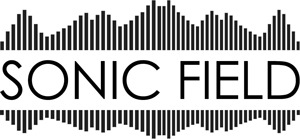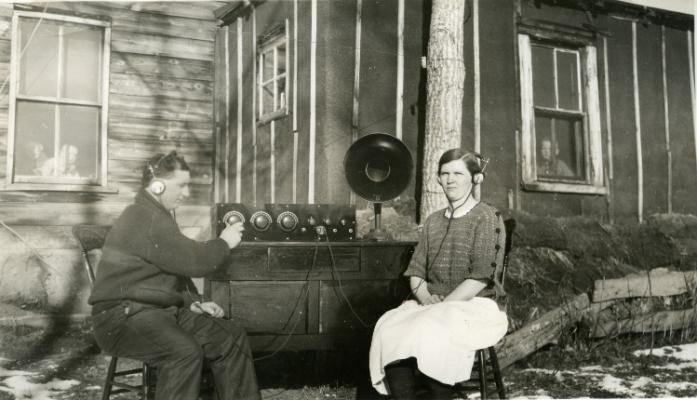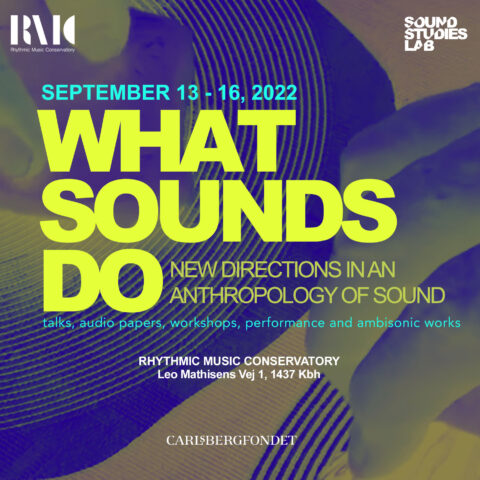A message from the editor:
This Sonic Constellation Compilation is part of the ongoing series: WAYBACK SOUND MACHINE, A CONSTELLATION OF SOUNDING TIME, which asks What can we gather from sounding the past–and with that in mind, what is the relationship between soundscape and sound design? This is Part Three, the conclusion of the three part series-within-the-series, that shares various artistic forms, and some text, of/on sound from the past, and designing and composing sound for the past. You can experience Part One here, and Part Two here.
Artists and sound designers working with and considering sound from the past can create sonic compositions and databases that could help us to remember and feel our heritage. This is a fluid, virtual museum and living archive giving voice or space to listen to the past in the present, creating new experience and highlighting information within the complexity of our changing soundscapes. We need to sense the world, and we can enjoy sensing the world. Remembering that we aren’t limited to just knowing our place in it, but can feel our place in it, allows for a transference and embodiment of information that goes further, goes deeper, creates care and extension of thought beyond our perception of present. Creates empathy, expands, and vibrates the interior and exterior. A vibration that affects, and a vibration that joins. This is the gift these artist/authors are sharing….
Catherine Clover – Score for the arrival of the blackbird in south eastern Australia 1860 (2019)
Common blackbird (Turdus merula)
Blackbirds are song birds. Like people, they learn their songs from their parents and their songs/language remain flexible throughout their lives. This means they can adapt their songs in a new environment, change and develop their calls, just as human language changes and develops. Blackbirds have only been singing in south eastern Australia since 1860, so their voices are relatively recent additions to the biophony (biological sound in any given environment). The birds have had to adapt their voices to locate their sonic niche – the bandwidth where they can sing and be heard by each other – amongst the louder native birds such as parrots, wattlebirds, Australian magpies, butcherbirds and currawongs. As a result, in Melbourne today, the song of blackbirds is louder, shorter and slightly less elaborate than the song of blackbirds in London or Berlin, where the birds are native.
Blackbirds were introduced to Australia by white British settlers. Colonisation has resulted in the eradication of culture and language for many Aboriginal people through dispossession and forced assimilation. The flourishing of blackbirds could be seen as symbolic of this cultural decimation, representing one of the many threads of an ongoing complexity in the postcolonial setting. Yet the birds also represent themselves and are themselves, as birds, and cannot be understood only as symbols for human actions and interactions. Indeed, for Aboriginal Australians there is no separation between nature and culture, and the natural world is the cultural world and vice versa. Theorist Donna Haraway coined the term ‘naturecultures’ in 2003 in order to re-entangle the two concepts and re-introduce what Aboriginal Australians have always understood, that these are not two separate ideas but, rather, equal components of a greater living whole, where humans are a part of things rather than a central pivot.
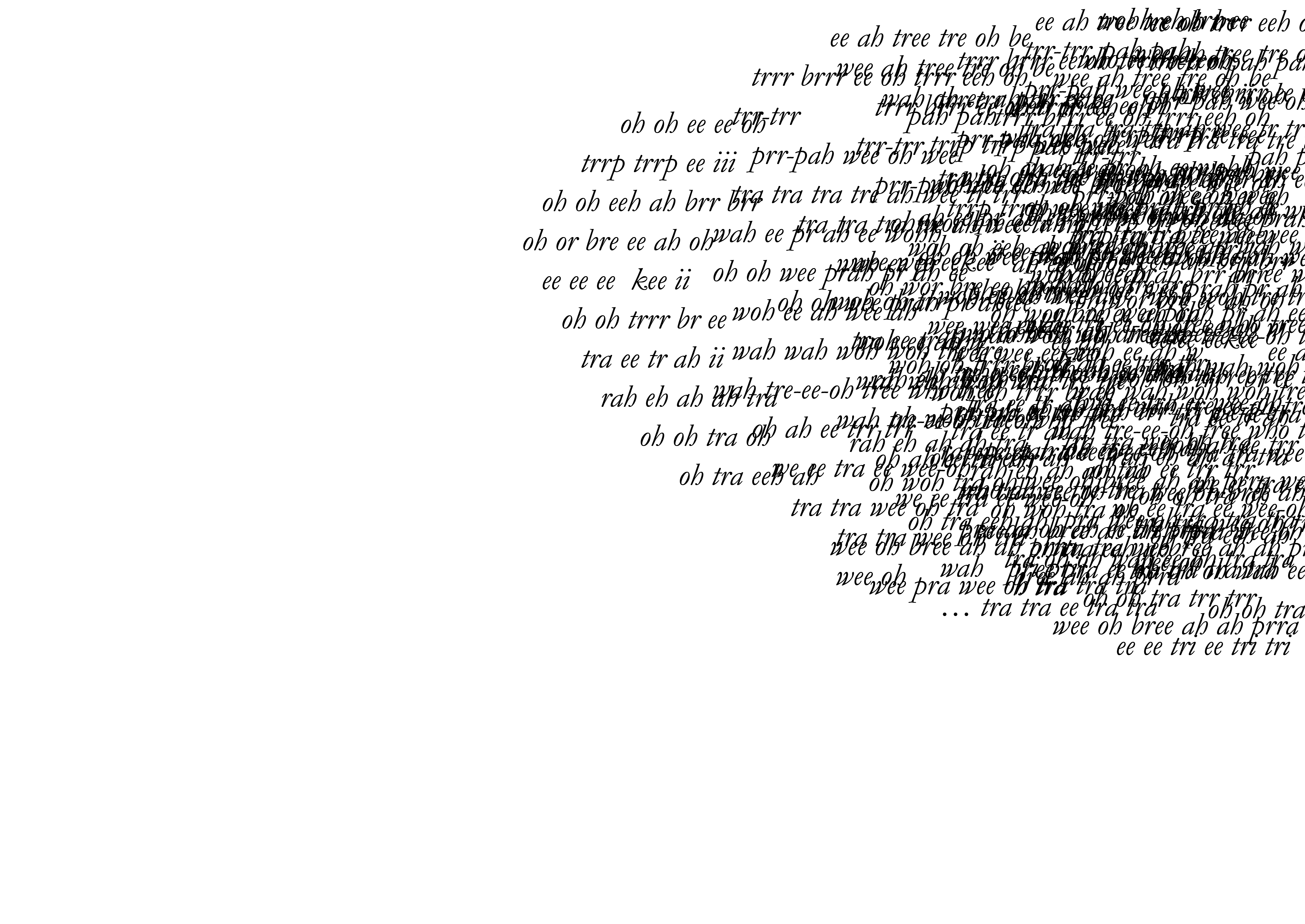 The score is intended as a prompt for readers to listen and voice with the blackbirds. The transcription struggles to interpret the intricate song using English phonetic words, so a voicing is a necessarily difficult undertaking, particularly as the score becomes less readable as more birds sing. However, the score is not about mimicking or deceiving the blackbirds but about improvising and speculating alongside them, so any attempt can be considered a success.
The score is intended as a prompt for readers to listen and voice with the blackbirds. The transcription struggles to interpret the intricate song using English phonetic words, so a voicing is a necessarily difficult undertaking, particularly as the score becomes less readable as more birds sing. However, the score is not about mimicking or deceiving the blackbirds but about improvising and speculating alongside them, so any attempt can be considered a success.
Monteith McCollum –
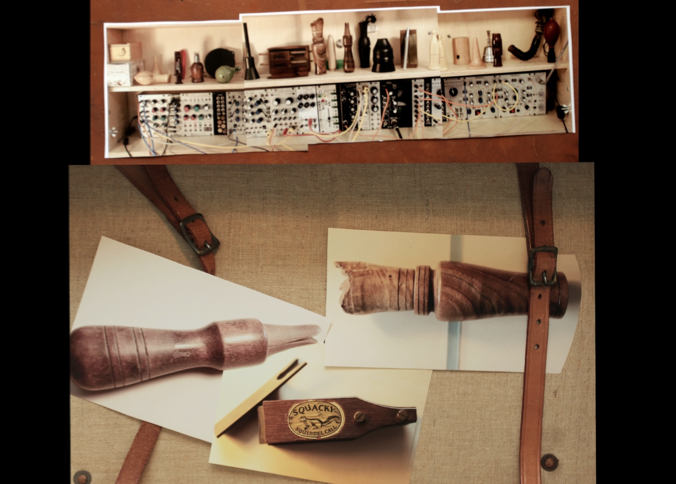
A year ago, I purchased a vintage bird call in a Binghamton, New York junk shop. When I saw it on the shelf I was struck by its odd sculptural qualities. Composed of deformed rubber, it sat in the heat of a sunlit window and took on this wonderful yellowish army green tint. With a neck of ribbed plastic, it looked as if it had once been living.
No.109 – The Thicket (8:42)
No. of Hunting Calls 6 – Including: Crow, Hawk, Robin, Deer, Turkey, & Peacock.
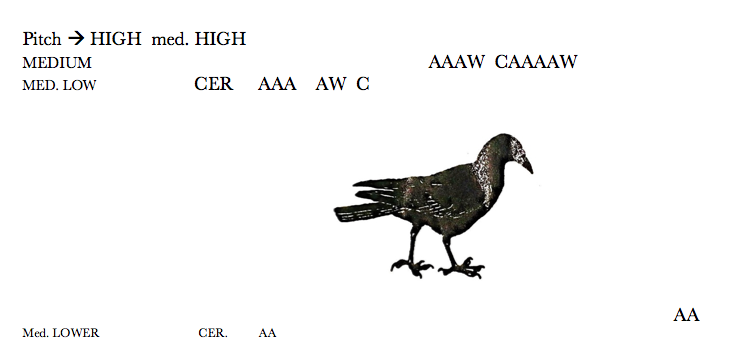
I took it home and placed it above my modular synthesis rack where it sat for several months until the idea of a whistle collection sprouted. The calls had great potential for remarkable sounds. I kept collecting, looking for a diversity within species, sound, and design. While most of my hunting calls are from early manufactures, a few are rough handmade objects constructed from individuals. Some whistles have bellows and rasps made from scraps of wood, others contain atrophying rubber bands strung around bakelite plastic. Later on, I came across a series of damaged calls. One in particular had been chewed on by the hunters’ dog. This maimed whistle prompted me to think about the relationships it shared with the poor animal it was intended to call to its demise. As I add to my collection, I continue to rearrange the calls on my shelves. Some remind me of Russian nesting dolls, others an inexplicable tool from the past. They all sit waiting.
No. 77 – Evening (8:55)
Calls include: Dove, Squirrel, Duck, Crow, Fox and sampled Cuckoo from a 78.
Using the calls, I set out to create a series of sound compositions that would elicit visages of distant artificial landscapes. Out of my experiments, I became fascinated with textural qualities. The squirrel, deer, and turkey, offered numerous possibilities in this area. The air blown whistles such as the crow, goose, and duck, added the sustained tones. In recording the calls I used both contact and condenser microphones, I then sampled and fragmented the sounds through a series of Phonogenes. I combined both unorthodox and traditional playing methods to the calls.
Often calls from particular manufacturing companies have a number associated. The names and numbers I’ve used to label my works are taken from the booklets attained with the calls.
No. 61 – Between Surfaces (8:35)
No. of Calls 4 – Including: Loon, Duck, Goose, & Deer. Sound sent through transducer applied to a piano soundboard on one track.
Andrea Williams – Riverfront Park Soundwalk
Riverfront Park Soundwalk is a site-specific, 20-minute artist audio tour of the Hudson River in downtown Troy, New York (near Albany) that was launched by the Rensselaer County Historical Society in 2016 and is ongoing. Participants use their mobile phones to access a map on my website with an option to play either a sequence of MP3 audio files, or for a short period of time participants could use the free Recho app to find the geo-located sound files. The meditative narration guides participants on a particular route with field recordings creating past, present, and future scenarios, mixed with layers of musical elements and interviews with the public and water experts (recorded from 2014-2015) that overlay the actual surroundings as they walk.
In the Riverfront Park Soundwalk, truth and fiction are sometimes blurred by local mythology. Stories told by residents reveal the beliefs held by the community that shape their connection to the waterways through generations.
I encouraged participants to write about their experiences after the soundwalk. Also, I asked if it gave them a greater connection to the Hudson River. If yes, why? Please stay tuned for a forthcoming article here that reveals the sense of place and stewardship that developed in many participants of the Riverfront Park Soundwalk.
The video below contains two audio clip prompts from the Riverfront Park Soundwalk (2016) paired with a more recent video snapshot of the Hudson River in winter 2018. Which way is the river flowing?
Diana Combo – Desacordo part 5
Desacordo é uma peça que se construiu a partir das gravações feitas pelo etnomusicólogo Michel Giacometti em várias zonas rurais de Portugal, nos anos 70, como parte da sua série televisiva “O Povo que Canta”. Algumas destas gravações são aqui combinadas com samples de discos de vinil e voz (Diana Combo junta a sua voz àquelas captadas por Michel Giacometti ou faz as suas próprias versões de músicas que ele deu a conhecer).
A distância espacial e temporal entre o agora e cada momento e situação geográfica correspondente aos vários fragmentos originais marca a discrepância fundamental que a combinação de vozes tenta superar, numa espécie de harmonia desconcertante. Em Desacordo, os mortos ressuscitam e os vivos podem regressar a um tempo perdido, pela sensação de poderem ter estado lá, com aqueles que outrora estavam vivos e que o Fado fez esquecer. Num contexto performativo, esta peça ganha as camadas extras de voz ao vivo e percussões.
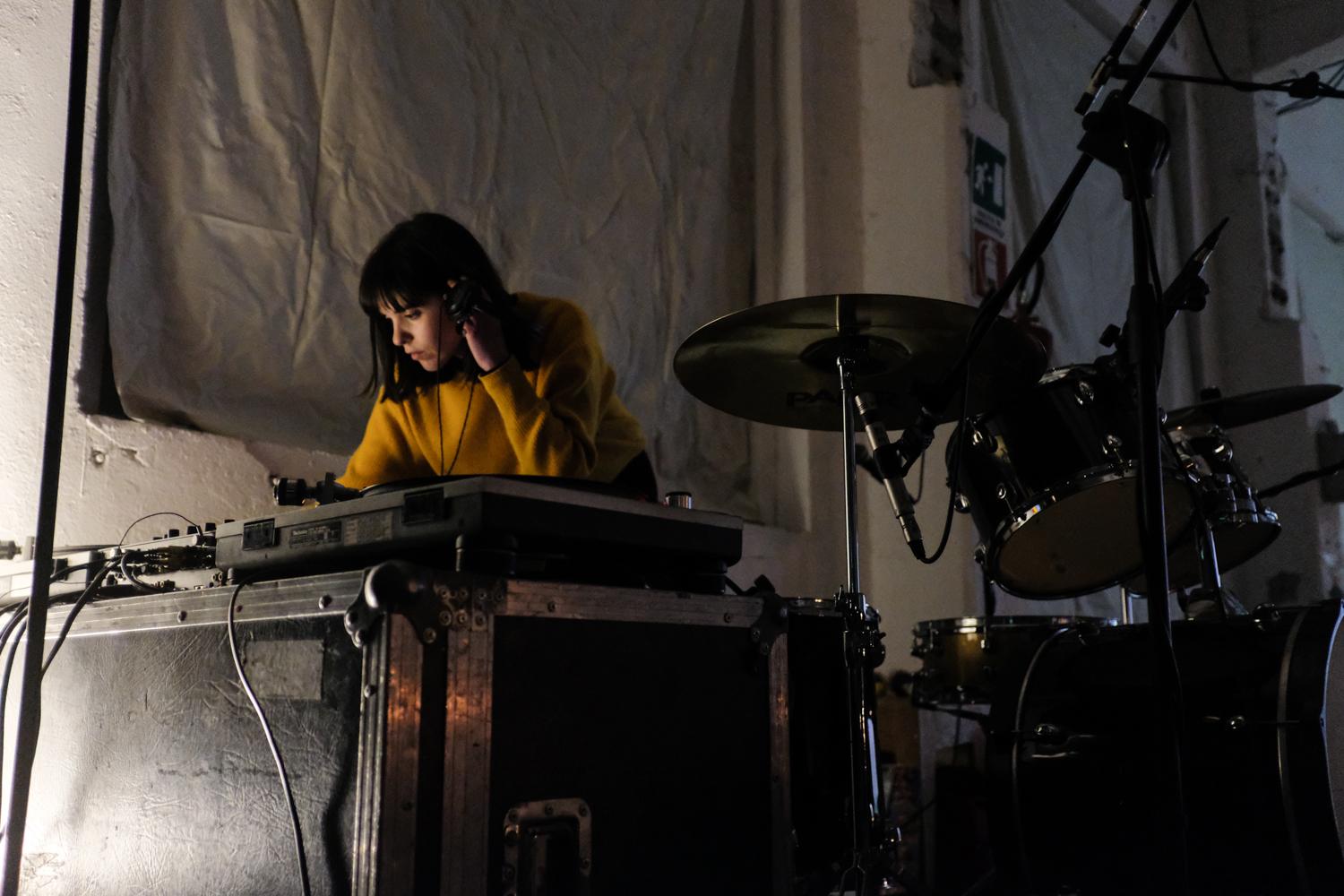
Desacordo is a piece that departs from recordings made by the ethnomusicologist Michel Giacometti in various rural areas of Portugal, in the 70´s, as part of his TV series “O Povo que Canta” (The People who sing). Parts of these recordings are here combined with samples from vinyl records and voice (Diana Combo sings ‘along’ with those voices captured by Michel Giacometti or makes her own versions of songs that he gave to know, from the recordings he shared).
The spatial and temporal distance between the now and each moment and geographic situation corresponding to the various original fragments marks the fundamental discrepancy that the combination of voices tries to overcome, in a kind of disconcerting harmony. In Desacordo the dead are resurrected, and the living might return to a time lost, from the sensation of being able to have been there, with those that once were alive and that Fado made forget. When presented in a live situation, this piece gains the extra layers of live voice and percussion.
Bonnie Jones – By the Time
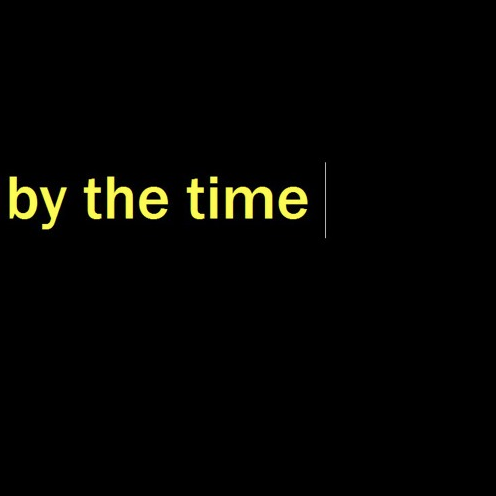

Wayback Sound Machine, A sonic constellation compilation…the end, start again
Biographies:
Sound artist, Andrea Williams, utilizes site-specific elements and perceptual cues to reveal the unseen connections between people and their environment. For over ten years, she has been creating compassionate spaces for restoration, creativity, and healing through various modalities including electro-acoustic soundscapes, soundwalks, and SleepWalks (soundwalks in people’s dreams), based on concepts of acoustic ecology, deep listening, and yoga. Her compositions make use of field recordings, instruments, computer technologies and the sound of the performance space itself. She has exhibited her work and performed both solo and with various musicians and artists at galleries and alternative spaces internationally, such as The National Gallery of Denmark (SMK) and the Mamori sound artist residency in the Amazon rainforest of Brazil. She holds a Ph.D. in Electronic Arts from Rensselaer Polytechnic Institute where she taught Deep Listening classes with Pauline Oliveros and studied how sensorially-engaging soundwalks could be used internationally as a tool for developing local solutions for pollution and climate change. She has received two NYSCA artist grants that were based on her research on how people connect to their local waterways.
Andrea Williams website
Bonnie Jones is a Korean-American improvising musician, poet, and performer working with electronic sound and text. She performs solo and in numerous collaborative music, film, and visual art projects. Bonnie’s work explores the fluidity and function of electronic noise (field recordings, circuit bending) and text (poetry, found, spoken, visual). Her art seeks opportunities within different mediums to expose the fluid nature of individual identity, history, form, and meaning. As an arts organizer, Bonnie was a founding member of the Transmodern Festival and CHELA Gallery and is currently a member of the High Zero Festival collective. In 2010, she co-founded TECHNE https://technesound.org/, an organization that introduces young female-identified women to technology-focused art making, improvisation, and community collaboration. TECHNE’s programs are delivered through partnerships with grassroots organizations that share an aligned commitment to racial and gender equity.
Bonnie received her MFA at the Milton Avery Graduate School of the Arts, Bard College. She has received commissions from the London ICA and Walters Art Museum and has presented her work extensively at institutions in the US, Mexico, Europe and Asia, including the LA MOCA, Museo Universitario Arte Contemporáneo, and REDCAT. Her collaborative sound works have been shown at the Swiss Institute, Whitney Museum, and Hunter College. Bonnie was a 2018 recipient of the Foundation for Contemporary Arts Grants to Artists Award.
Born in 1977 in South Korea she was raised on a dairy farm in New Jersey, and currently resides in Baltimore, Maryland.
Bonnie Jones website
Catherine Clover’s multidisciplinary practice addresses communication through voice, language and the interplay between hearing/listening, seeing/reading. Using field recording, digital imaging and the spoken/written word she explores an expanded approach to language within and across species through a framework of everyday experience. The artworks are social in nature and frequently involve collaboration and participation with other artists and with audiences. They take several forms including texts/scores, soundworks, installations, performance, readings, external public artworks, radio and artists’ books.
Brought up in London UK she studied during the 80s at Wimbledon School of Art, SW London, and East London University, and arrived in Melbourne Australia as a visiting artist through Gertrude Contemporary in the 1990s. Her work has been exhibited and performed regularly both within Australia and internationally since the 90s. She teaches at Swinburne University (MA Writing), Melbourne, and holds a practice led PhD (Fine Art) through RMIT University.
Catherine Clover website
Diana Combo explores sound and music in many creative, often multidisciplinary contexts.
Moving in and out of academia (undergraduate degree in Sound and Image, student of the Master’s degree in Music Arts), in the country and abroad, the innumerable sonic and performative experiences have crossed the most intuitive and DIY knowledge with theory and learning specifics to each form of expression. The result is the consolidation of an experimental approach to sound that has manifested itself in turntablism and sound appropriation practices, editing and sound design, composition and interpretation, installation and video, among others. In concert halls, in theater or cinema, in residences and workshops, solo or in collaboration, the boundaries between creative areas and between the individual and the collective have been constantly questioned and diluted in her work.
Currently, she works as a music programmer at Teatro do Bairro Alto, in Lisbon, and is a student of the yoga teacher training course of CPY (Centro Português de Yoga).
Monteith McCollum is an inter-media artist working in film, sound, and sculpture. His feature non-fiction films often explore intersections between man and the natural and constructed environment. His latest films are focused on more esoteric scientific explorations into experimental sound practices. Monteith has done sound design and music for numerous films aside from his own. He has worked with filmmakers such as Mark Street, Ariana Gerstein, Yen Ooi Chi, and Ken Paul Rosenthal. His independent films have screened at Festivals and Museums including The Museum of Modern Art, Hirshhorn, Wexner Center for the Arts, and Festivals including SXSW, Slamdance, Hot Docs, and the San Francisco International Festival. His work has been funded and supported by the New York Foundation for the Arts, Rockefeller Foundation, NEA, and the Jerome Foundation. In 2001 he received an IFC Independent Spirit Award for his feature work “Hybrid.” Recent live Audio / Visual performances include the projects “Hidden Frequencies” and “Rabbit in the Sand.”
Monteith’s seminal occupational experiences include: Truck driver for a Chicago soup kitchen and Cameraman for the Polish television network PolVision. He currently teaches film and experimental sound practices at Binghamton University.
